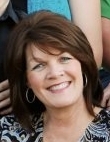This is the first part of a series of interviews with local health department staff who will present at the 2014 Preparedness Summit. Paulette Valentine, Director of the Emergency Preparedness and Response Division at the Southwest Utah Public Health Department, previews her session, “Strategies to Assess, Plan for, and Engage Partners to Meet the Access and Functional Needs of At-Risk Individuals for Rural/Frontier Local Health Department.” At the session, Paulette will be joined by Louise Shaw, Regional Epidemiologist at the Utah Department of Health, and Christy Torgerson from the Kane County Utah Senior Center.

Paulette Valentine, Director of Emergency Preparedness and Response, Southwest Utah Public Health Department
Q: Congratulations on your invitation to present a session at the 2014 Preparedness Summit! Can you give us a preview of what you plan to cover?
A: We will discuss one way that we meet the needs of specific vulnerable groups in small rural or frontier communities in an emergency. I am so excited to share our Preparedness Buddy program with the nation. I think it will be an answer to many of us who live in small communities and are concerned about how to meet the needs of the vulnerable populations in the community. The most important thing that has made this program so successful is the shared responsibility of meeting this need. We have some great partners that help us fill the gaps, and during our session, we will explain how we partner with organizations like faith-based groups. Also you will learn how we found our numbers of vulnerable community members for accurate reporting and tracking.
Q: Can you elaborate more about the Preparedness Buddies Program?
A: It is a system for neighbors to take care of neighbors; the Preparedness Buddy is someone who is aware of this responsibility to check on their friend or neighbor. This seems to happen in small communities anyway, so it seemed like a great fit for us. We also found it helpful to have someone who can be a Buddy as part of their regular job. For example, the Meals on Wheels person could tell me every person that she felt we should have on our list. Another avenue we are using is faith-based communities since they already have systems for supporting each other in a crisis. Additionally, home health agencies, the center for independence, and hospice groups assist us in the program. The County Emergency Managers are thrilled with the outcomes we have been receiving, and participants have peace of mind knowing they will be checked on in an emergency.
Q: What are some of the challenges your rural community faces?
A: More than 60 percent of public health departments serve rural or frontier communities; we are important but often overlooked. The Southwest Utah Public Health Department covers 17,000 square miles so our area is very large, and that is our biggest challenge. It can take up to 4 hours one way for me to meet with some of my partners. To break through this barrier and the other challenges, I try to always attend our partners’ drills, training, events, and exercises. Support your partners and they will support you.
Q: What are other strategies the Southwest Utah Public Health Department has incorporated to address the access and functional needs of at-risk individuals in your community? Which of these can other rural communities replicate?
A: Besides the Preparedness Buddy program, we participate in a number of community groups that meet the needs of vulnerable populations. Once you mention you are willing to help, partners always seem to want you at the table because you can truly make a difference. For example, attend the walks to support Alzheimer’s, point-in-time counts for the homeless, or other such events. Then partners know you are serious about being a team player and they will be more willing to help you.
Q: What are you looking forward to most about this year’s Preparedness Summit?
A: I hope at my session other rural or small communities will share with me things they may have done to find these people and what is working for them. It is always good to come home with great ideas from others who really “get it” when it comes to meeting the needs of small communities. I love the networking. I can’t tell you how many times I come home all excited about something I’ve learned and implement it. Anything to help us be more prepared and resilient as a community and a nation is what I am looking to learn about. I always wish I could be in more than one session at a time because so many are of interest this year to me. I can’t wait to meet many of you at the Preparedness Summit.
Join us at the 2014 Preparedness Summit and attend Paulette’s session on Tuesday, April 1 from 1:30 – 3PM. View the full Summit schedule to see what other sessions are in store at this year’s event.








